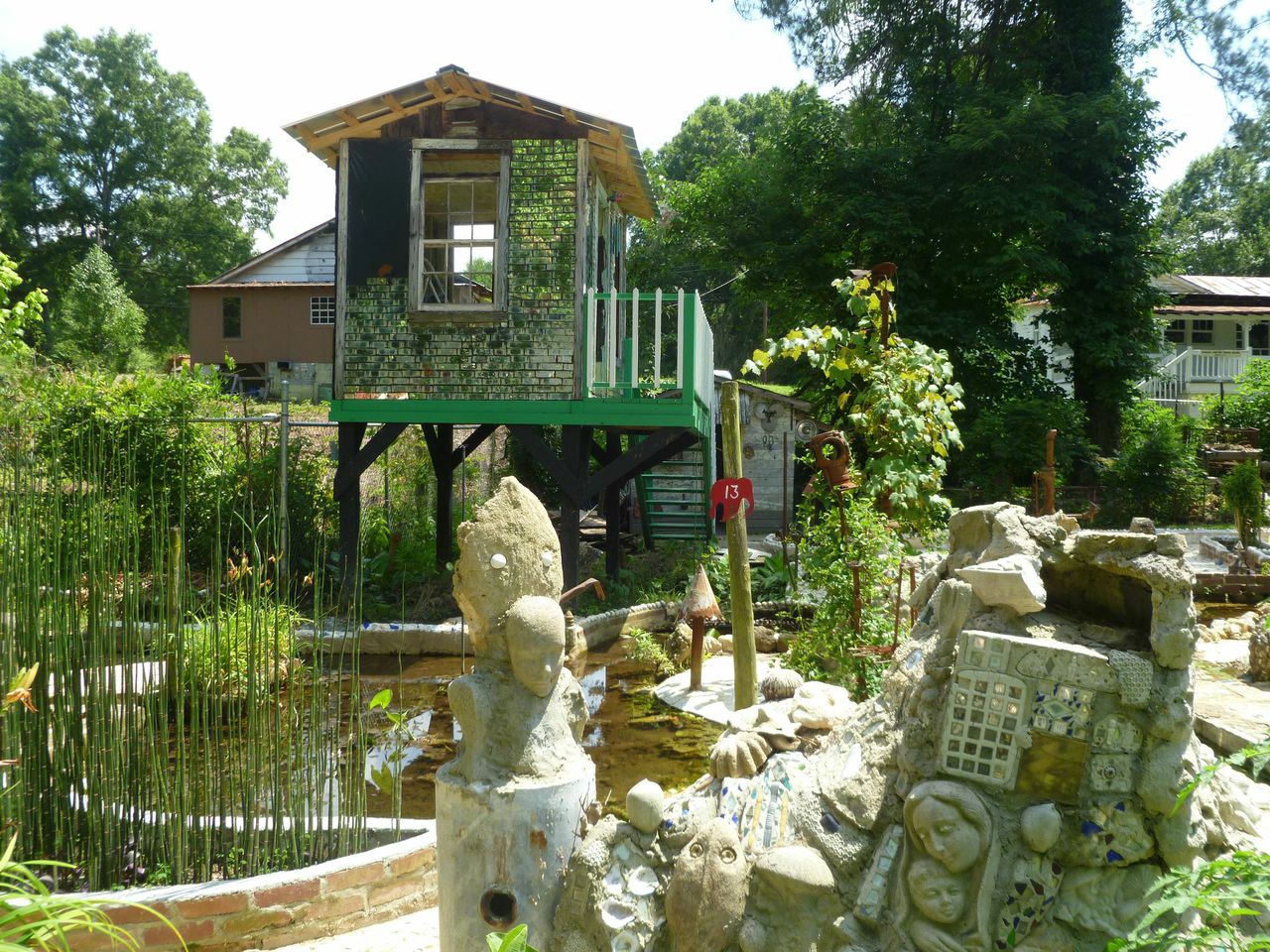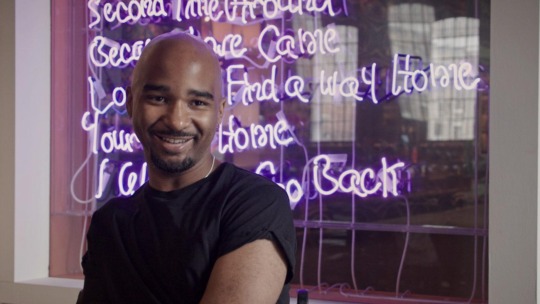
On a recent sunny afternoon, I drove about two hours northwest of Atlanta with friends. Our destination was Summerville, Georgia, a small town where artist Howard Finster [1916-2001] made his home and garden. Finster has been called the “Andy Warhol of the South,” an epithet that makes sense if one considers the artist’s flat and colorful cutout paintings of such figures as George Washington and Elvis Presley. However, upon a second look, many of these simply painted pop subjects and the texts incorporated into the unmodeled fields of paint suggest different priorities. A Baptist minister, Finster packed his works with zealous messages not unlike a Dr. Bronner’s soap label, intended by the divinely inspired artist to spread the word of God.
Finster felt called by God to make sacred art at age 59, while standing outside the shed where he repaired bicycles, one of his many trades that included preaching, playing the banjo, and running a general store. As he was painting a bicycle, Finster had a vision—an image appeared on his thumb—that God wanted him to paint 5,000 pieces of sacred art. That was in 1976. By the time of his death in 2001, 84-year-old Finster had relentlessly labored day and night to create over 46,000 works.
Today you can see many of the artist’s paintings in museums, including the High Museum in Atlanta. Unlike many self-taught artists, Finster had a successful career within his own lifetime, selling his works to major museums, being featured in Esquire and People magazines, and notably designing album covers for R.E.M. and the Talking Heads. Rather than being exploited by the art world, the canny artist used these opportunities to spread the messages God gave him and to support his life and practice. Before the paintings, however, came the garden. The artist started it on a plot of swampland that he dredged and filled with self-made mosaics, sculptures, and buildings. The intricate, colorful, and densely filled plot of land that eventually came to be called Paradise Garden was the initial home of many of Finster’s paintings as well.
Aided by a $445,000 grant from ArtPlace America, the Paradise Garden Foundation reopened the site to the public in 2012. Although many of his panel paintings and even some large mosaic and found object sculptures have been removed to museums and private collections, a substantial number of Finster’s works remain in the garden, as do the buildings, paths, and other objects that the artist designed and built. Finster’s magpie aesthetic, using mostly found objects, tends toward mass and accumulation—at least one reason why walking through the garden provides a better understanding of the artist’s work than seeing an object or two in a museum. Finster used thousands of pieces of what others might call trash to create glittering walls of cast stone, mirrors, and photographs, or massive bird’s nests of bicycle parts that rise like impossible ziggurats to the sky. Taking in these details as you walk through the grounds and houses illuminates Finster’s micro and macro views. His vision was honed to the small bits of glass and china laid in the sidewalks but also circumscribed the impressive 40-foot-tall, 16-sided World’s Folk Art Church. A favorite quote of the artist is painted on the side of the church: “I took the pieces you threw away, put them together by night and day. Washed by the rain. Dried by the sun. A million pieces all in one.” Indeed, the whole site became a composite work of art in his hands, and the power of Finster’s work is both particular and cumulative.
Visiting Paradise Garden clarifies just how misleading a comparison to Warhol can be. Clearly, Finster was driven to spread a message from God and Warhol was not. Moreover, Warhol chose to use flatness and pop culture subjects in response to banality, commercialism, and death. Finster uses figures like George Washington, John the Baptist, and Elvis as meaningful, positive constructs that held a particular significance for him. The flat way that Finster paints is a result of his self-taught technique, in which he used photographs as the basis for stencils. Finster’s clearly delineated paintings articulate space in a representational albeit nonperspectival manner, whereas Warhol’s use absolute flatness as a background. Even Finster’s painted wood cutout portraits were originally set on the lawn of Paradise Garden, contextualized in space rather than on a gallery’s white wall.
Paradise Garden was a work-in-progress during the artist’s lifetime, and it remains so today. Finster collected a huge amount of stuff, and even today the staff discovers new parts of the garden that had become overgrown. Most of the site is exposed to the elements, causing decay, and some of Finster’s structures grow unstable and need maintenance. The Paradise Garden Foundation has done a great job over the past three years in uncovering and restoring the site for visitors—efforts that have included everything from hooking up electricity and water and removing deep layers of mud to building stabilization, mosaic repair and maintenance, and recreating the original beds of Finster’s vegetable garden. A current goal is an exterior and interior renovation of the World’s Folk Art Church. Finster’s former studio has been expanded and includes a helpful visitor’s center with videos about the artist, a gift shop, restrooms, and, thankfully, air conditioning. Well worth a day trip, you can tell even your non-art loving pals that they’ve never seen anything like it. And that’s gospel.
The Paradise Garden Foundation in Summerville, Georgia, is open Tuesday through Saturday 11am-5pm and Sundays 1-5pm.




